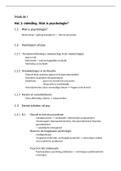Samenvatting
Summary Economics of Health and Health Care - Health Economics, Policy & Law ()
The summary includes all lectures including exercise lectures of the course Economics of Health and Health Care of the master Health Economics, Policy & Law. Good luck with studying!
[Meer zien]













